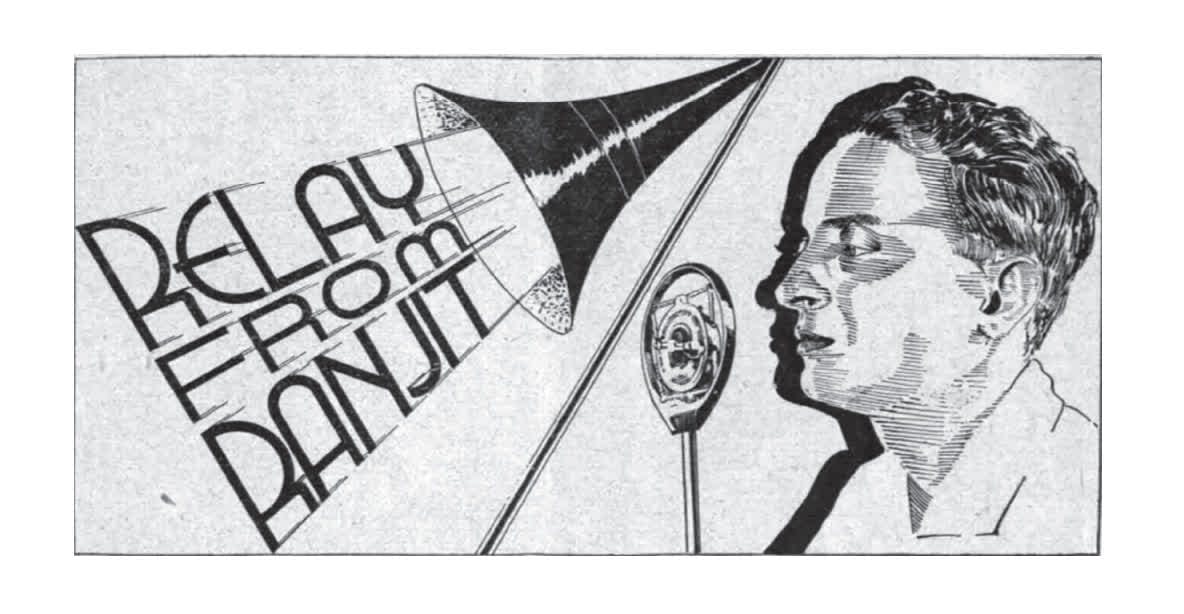Sound, a Game-Changer in Bollywood
BOOKMARK
Through the 1930s sound in Indian film was recorded in live synchronization, that is, on set or on location. Playback singing, dubbing, elaborate background scores, and foley design, which have become synonymous with mainstream Indian film production today, came into use only from the 1940s onward. Early talkie actors had to sing their own songs and speak their own dialogues; even music orchestras were recorded live on set either as part of the diegesis or hidden off-frame. Sync sound technology altered the relations of the human body with the filmmaking apparatus and produced a new repertoire of cultural techniques. Directors and assistants learned to amplify their voices over megaphones to communicate with a larger group of workers, actors learned voice modulation and oral expressivity, and off-screen jobbers learned to stay silent during a take.
Bombay city in the early twentieth century not only was a city of mediated speech, it was also a city of noise. The transition of talking cinema necessitated a heightened awareness of the acoustic environment of production.
– For the first time, “the buzz of an aeroplane passing over-head, the distant hooting of a motor horn, or even the coughing and sneezing of a man” could ruin a shot and add to the theme and expense of the shooting process.
The history of the talkies in Bombay is a portrait of a city sweeping outward. Proximity to train station, working-class neighbourhoods, and the bustle of bazaar economies and consumers had made Dadar a prime locality for Bombay’s silent film companies. A new need for silence now pushed Bombay’s talkie studios further north to sparsely populated suburbs like Andheri, Goregaon, and Malad. Alongside attempts to control their exterior environments, film studios also had to manage interior environments with soundproofing techniques such as heavy roofs and noise-absorbent furnishings, blimped cameras, and light indicators for live recording. Improvisation was the order of the day, given the severe lack of resources in Indian studios. Sound recordist Bani Dutt describes that “The studio stage or ‘floor’ looked somewhat like a jute or rice godown. Thirty or thirty-five feet high brick walls on four sides with one or two big doors and a corrugated iron roof over it- that is what studio floor was [sic]. Hessian cloth was used to minimize echo and reverberations of the stages.” It was almost impossible to record “clean” sound in such circumstances and “a sound engineer was congratulated if only 80% of the dialogues were clear and distinct.”
Apart from making structural changes, filmmakers also had to recalibrate their technical knowledge practices. The presence of the microphone brought unfamiliar constraints on framing, composition and camera movement. Editing and shot division presented another set of challenges. How to cut from a wide shot of two characters speaking to a close-up of one character continuing a sentence? In the single-system recording process, sound and image were recorded on the same strip of film and could not be disarticulated. One could not take sound from one part of the film and use it over image from another part. Would every dialogue scene have to be shot in its entirety for each different camera set-up? Silent cinema in India had come a long way from the static wide frames used for shooting theatrical plays in the 1910s. In 1931 talkie films momentarily threatened a return to long static shots because “when to say ‘cut’ was found in itself (to be) a big problem. “
Actors, too, were forced to rethink acting in terms of embodied vocality. Theater artistes and gramophone singers, whose vocations depended on the use of the voice, now joined the talkie industry, while film actors from the silent period trained themselves in Hindustani speech, precise enunciation, voice modulation, dialogue delivery and basic singing skills. Film reviewers increasingly agreed that there was something different about the voice on film and that a new set of competencies were required to speak to this difference. One critic noted that “the artistes have been imported almost wholesale from the stage. They have not acquitted themselves badly. But I think, producers would do well to free their concerns from the apron-strings of the theatre, because by doing so they will make room for newer talents who are better-suited to face the camera and the microphone than present incumbents.” Thus, even as film commentators acknowledged the cross-platform links between cinema and theater, there was a strong push to define and individuate cinema via technology.
Sulochana, a silent era star who successfully made the talkie transition, remembers the thrilling changes of time:
“I vivdly remember my first ‘Vocal’ shot. It was a novel experience to face the mike while doing one’s bit of acting. The presence of the recording set seemed to have a new element of responsibility in the voiceless world of screen-pantomime…No doubt, the responsibility of delivering the lines in correct intonation before the camera added extra strain in those days to our historic repertoire but personally I enjoyed the thrill with great enthusiasm."
Excerpted with permission from the book Bombay Hustle: Making Movies in a Colonial City by Debashree Mukherjee (published by Columbia University Press/Penguin).
This article is part of our special series the ‘Making of Modern India’ through which we are focussing on the period between 1900-2000. This century saw the birth and transformation of India. This series aims to chronicle India’s exciting journey and is a special feature brought to you by LHI Foundation.










